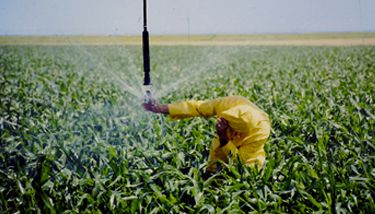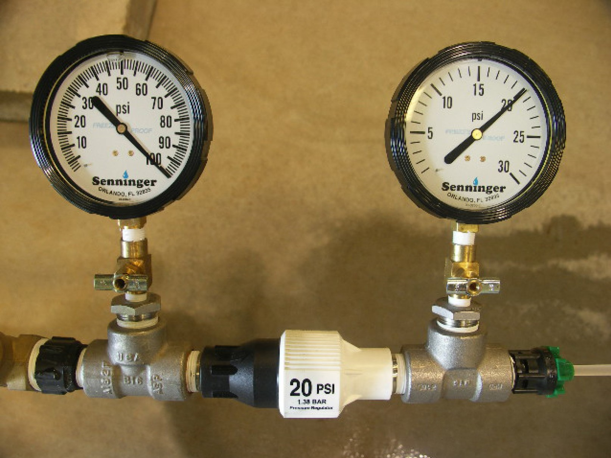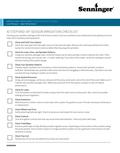
Checking your sprinkler package at the end of every season is just as essential as any maintenance and upkeep you do for other farm machinery and equipment.
While reaping the fruits of their labor, some farmers may be tempted to forget about their pivots. Yet the end of the season is one of the best times to check sprinkler packages to make sure your pivots are in top shape and ready for another growing season.
Worn or malfunctioning sprinklers can tend to have distorted distribution patterns. This may lead to over or under-watering in certain areas. A sprinkler with wrong nozzle size may also be the cause of overwatered or underwatered areas. Over-watering can seal the soil surface, causing run-off which carries away part of your soil and nutrients, resulting in weed invasion, or even disease proliferation.
On the other hand, under-watering creates deficiencies and stress that reduce crop quality. Pressure regulators that don't work properly result in pressure fluctuations impacting flow, droplet size, and distribution pattern of the sprinkler.
We suggest you look at this end-of-season checklist for a quick overview of the things you should take care of. You can also download our 10-Step End of Season Checklist to carry with you into the field.
1. Check Your Nozzles
Find a copy of the sprinkler package chart. This contains the location of all sprinklers and pressure regulators. Using the chart, verify the nozzle size for each sprinkler location matches the chart. If the nozzles are wrong, you may be over or under-watering.
2. Check Yield Maps
Examine yield maps to help identify possible irrigation issues. Depending on the location of the problem along the pivot pipeline, the economic impact of a single sprinkler problem can be significant in the amount of yield reduction it causes.
3. Check for Leaks and Flush Your System
Check the system for leaks. Remove the sand trap and flush the entire system for several minutes to remove debris that may plug the sprinklers. Next, drain water from the pipes and anything else on the above-ground portion of your pivot system that can hold water.
4. Check Your Sprinkler Patterns
Visually inspect sprinklers for consistency in their distribution patterns. Assure that sprinkler overlap is sufficient. Disassemble any sprinklers with issues and check for plugging or defective parts. Sprinklers can wear out and will stop rotating and spray pads may have build-up. See if there are kinked or damaged drop hoses that need fixing.
5. Check System Pressures
Using an accurate pressure gauge, verify your pressure at the pump, pivot point, and at the end of the pivot. Make sure it matches the sprinkler package chart. Note that an accurate gauge should return to zero when system pressure is relieved and show the fluctuation in system pressure as the end gun or addition sprinklers are turned on and off.
Pressure should be at least 5 psi (0.34 bar) above the pressure regulator rating. If you have a 10 psi (0.69 bar) pressure regulator, your pressure gauge should read a minimum of 15 psi (1.03 bar). Compare the numbers to the design pressure in your sprinkler package chart to make sure everything matches.

6. Restore the Ground Around the Tracks
Close wheel tracks so that they can firm up over the winter. Repairing tracks at this time will help avoid erosion during the spring. It will also make it easier for you to move the system when the irrigation season begins. If when tracks are a major issue, you may want to look at solutions to minimize wheel rutting during the next growing season, like pivot boom systems or part circle sprinklers that help keep wheel tracks dry.
Hopefully, you won’t notice any runoff or a lack of uniformity while inspecting your sprinklers. If you do, go back to your sprinkler package chart and check the nozzle sizes and placement of sprinklers that are showing problems.
Check your system and consider whether a new sprinkler package would be beneficial. Select a sprinkler device that irrigates with low application intensity over a large diameter and creates relatively large droplets that can combat wind-drift and evaporation.
If you want to renozzle your system, check with your local power company for possible incentives when you switch to lower pressure systems.


